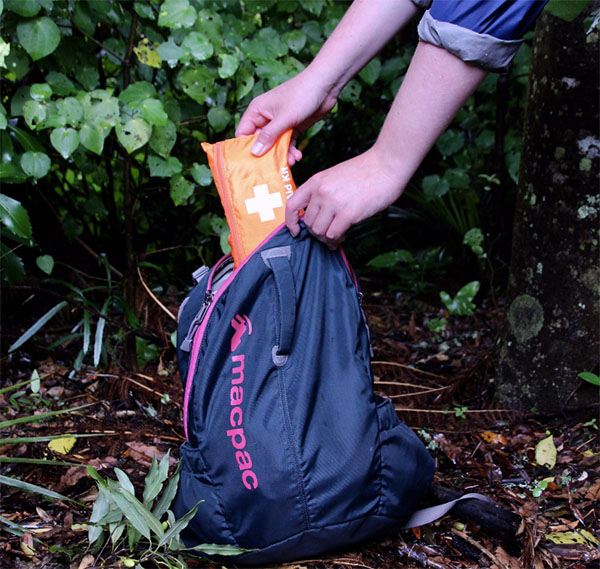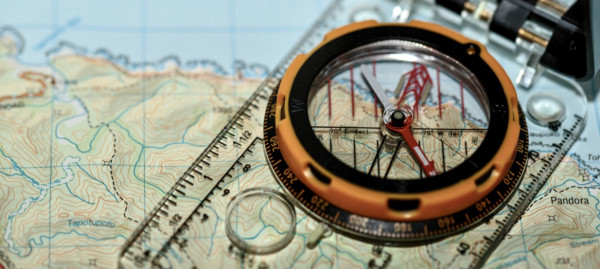Simple tips for an enjoyable trip into the hills
There are a handful of simple decisions and actions that a tramper can make and do before leaving home that will both make the trip more enjoyable as well as save time in an emergency.
Bevan Smith, one of our Partnership Advisors, shares five tips that he believes will prepare a tramper for their next adventure:
1. Refine your first aid kit.
Consider the possible injuries you and your tramping party may need a first aid kit for. It doesn’t need to be a massive kit; many standard first aid kits are designed for responding to a motor vehicle accident, so can contain bulky items that you are unlikely to need in the bush.

So I generally think about the items that I’d need to be able to treat the more common tramping injuries, such as blisters, rolled ankles, minor cuts and grazes and bee stings.
I also consider any pre-existing injuries or medical conditions that people in my party might have, such as dodgy knees, asthma and air-borne allergies. Significant bleeding injuries are uncommon for trampers (although hunters should always be prepared), so don’t take too much in the way of absorbent pads.
Attending an Outdoor or Wilderness First Aid course will help you to learn how to improvise with your existing gear if such a situation did occur. Check out our suggested first aid kit list here.
2. Divide group items up strategically.
As a group, decide who carries the team items such as the Personal Locator Beacon (PLB), first aid kit and lunch. It’s a good idea to divide items up so only one person has to get it out. For example, the person who has the most experience providing first aid could carry the kit, or someone who has recently done a first aid course.
An experienced navigator should carry the map but the role can change between members during the day, especially to those who want to practice. Again, have one person carrying the lunch and another carrying the snacks.
3. Pack important items at the top.
In the morning when you’re packing, think of what you will need during the day. Those responsible for group items such as the first aid kit, emergency comms, maps and compass should pack these items in an easy-to-access place.
Everyone should also have a sunhat, water and warm and waterproof layers at the top of their packs.
Other items, such as your tent and sleeping bag, food for dinner and spare clothes can go at the bottom of your pack.
4. Check progress with the map.
For each day, usually the night before, look at the day ahead and estimate how long the trip will take you. Break the day up into segments, planning where you will rest and when you plan to reach each spot.
As a tip, groups generally walk around 2km per hour on rough tramping tracks. Steep or challenging terrain can make this even slower. Wide, easy tramping tracks on the other hand can frequently be walked in between 3km and 4km per hour.

Additionally, it is good practice to factor in some extra time in case it takes a bit longer than expected, or for an unexpected event, such as an injury. This will help you to stay on time.
During the day, keep checking the map as your progress, checking where you are and refer back to your time estimations to see how progress is going. Not only is this a key navigational skill, it also will help you to become more effective at estimating your walking pace in different conditions.
If you’re taking considerably longer than you’d planned, then you’ll need to consider switching to Plan B. This might involve deviating to another campsite or hut or turning back.
5. Give yourself time.
Don’t muck around in the morning, it’s good to get going early to give yourself plenty of time and to allow for emergencies. This is especially important in autumn and winter when darkness can creep up a lot more quickly than you might expect.
Where to next?
- Download our new trip planning tool app, Plan My Walk, or head to the website.
- Learn more about tramping skills and try out our E-Learning Tool
- You can also dive into the navigation section of our Bushcraft Manual
- We also have How to videos in our Get Outdoors Series. These show you how to Pack for a Tramp or Day Walk, Read a Map and What goes in your First Aid Kit.
If you have tips on navigation for NZ’s outdoors, get in touch – the more shared, the more others can learn. Email Rebekah.Wilson@mountainsafety.org.nz